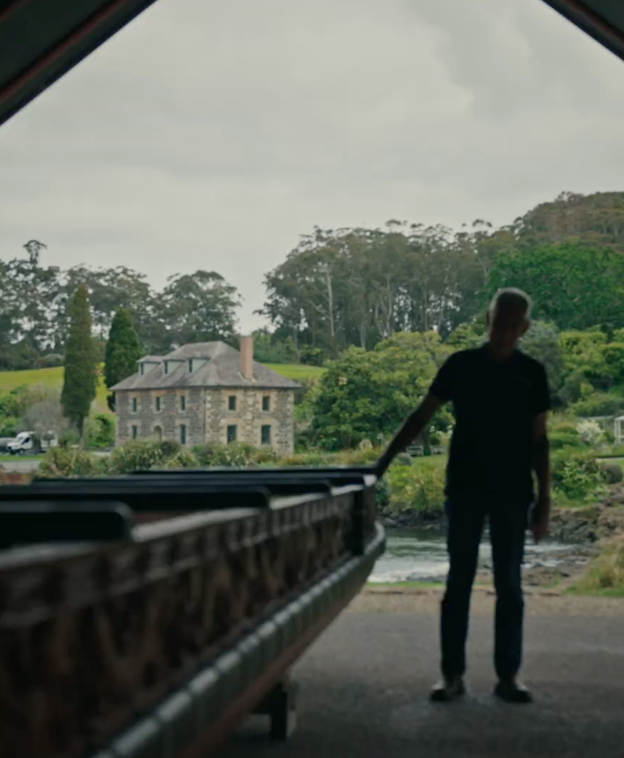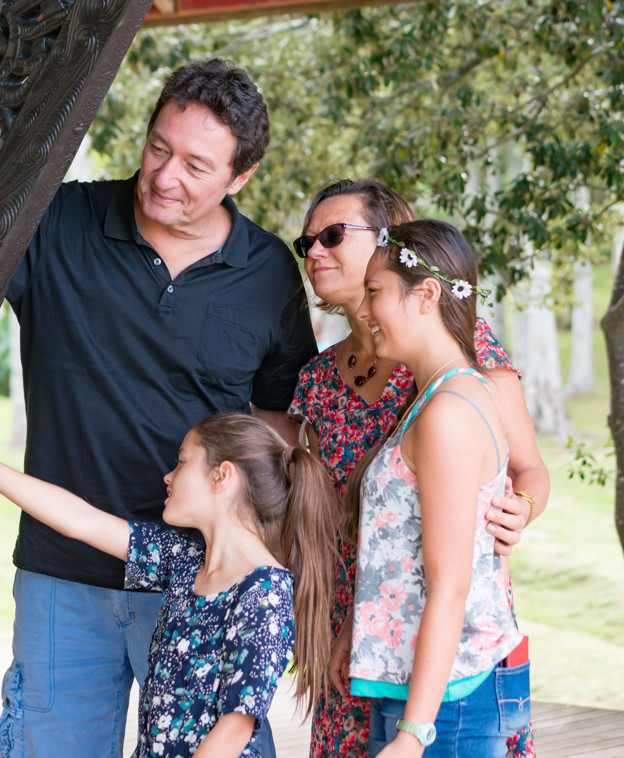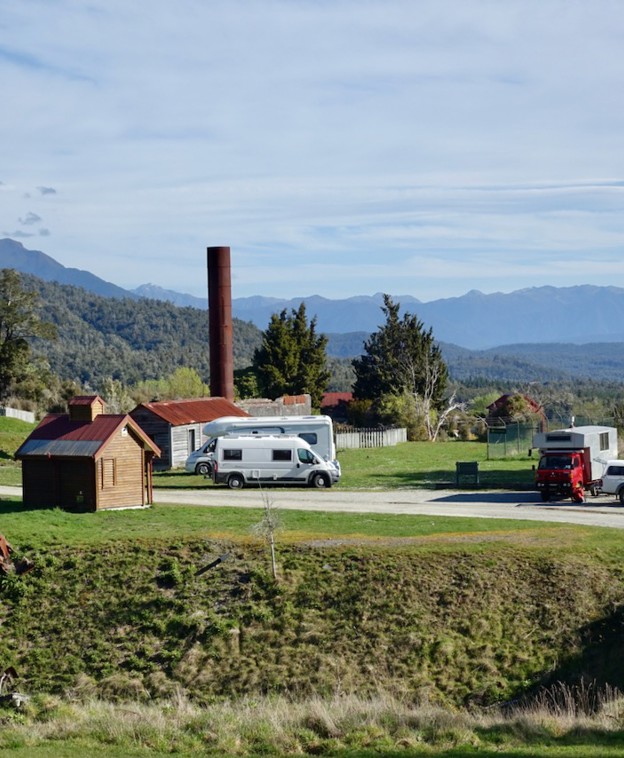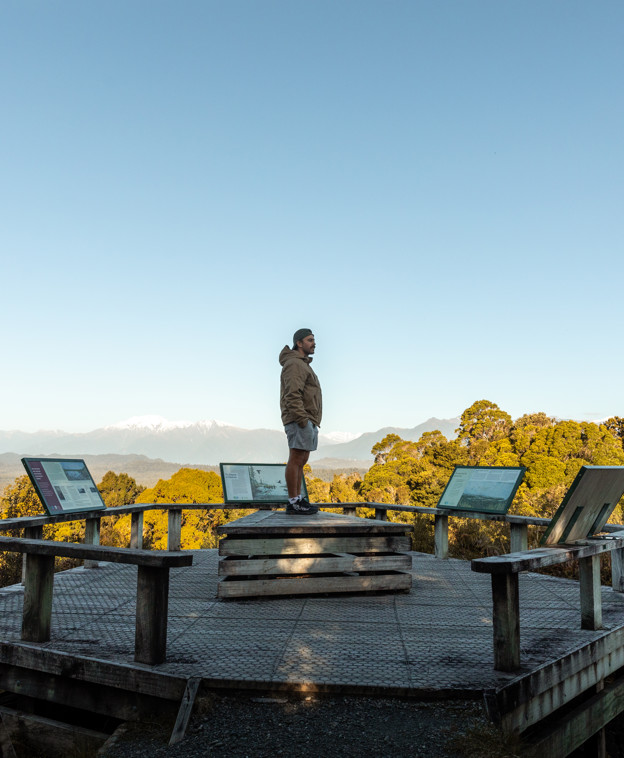West Coast heritage by campervan
Mining tunnels, ghost towns, stamper batteries, shipwrecks, all in mind-bogglingly beautiful locations. When it comes to heritage, the West Coast has plenty of iconic hot spots and hidden gems that await discovery. Claudia Babirat explores some of the places that defined the West Coast and shaped our nation.
This year my partner Pete and I took an early Christmas holiday in our campervan and spent almost a month travelling in a return loop from Arthur's Pass to Karamea inspired by my new-found appreciation for our unique heritage places.
These are five West Coast sites that have been awarded Tohu Whenua status.
It’s funny how things change.
I’ve usually visited the West Coast to fossick around on its rugged beaches, to hike into a remote hut somewhere in the wilderness, to spot unique wildlife like whio or kākā, or simply to relax with a local brew and mussels collected off the rocks. Being in the outdoors provides balance to my more hectic life in the city, and there’s no better place than the West Coast to achieve that.
About three years ago my view of the West Coast started changing. I was offered a part-time job with Tohu Whenua, a national visitor programme that works with regional communities (including on the West Coast) to identify and promote some of New Zealand’s most significant heritage sites. It’s safe to say that I was hired for my marketing skills rather than my knowledge of history. History to me always seemed a bit, well, stuffy, and I didn’t connect it with spending time out in nature.
Turns out I was wrong. As I learned the stories behind the Tohu Whenua I was promoting on social media, visited the sites in person, and met the salt-of-the-earth locals who care for them, I began seeing history in a completely different light. It’s hard to explain, but it kind of started coming alive. On the West Coast, you can stand among the ruins of once huge industrial gold mining complexes that are being reclaimed by forest, see where scores of coal miners washed themselves in concrete bath houses overlooking the ocean, or shop, dine and do gin tastings in charming ‘Wild West’ style towns that proud locals have breathed new life into. What’s more, this history is ours. It’s uniquely Kiwi. What happened at these places helped shape our culture, their stories are part of all of us. And they’re right here for all of us to explore.
This year my partner Pete and I took an early Christmas holiday in our campervan and spent almost a month traveling in a return loop from Arthurs Pass to Karamea inspired almost fully by my new-found appreciation for our unique heritage places. Below are our explorations of the five West Coast sites that have been awarded Tohu Whenua status.
Waiuta - a gold mining ghost town
Once a remote but bustling mining settlement located between mountain ranges, Waiuta's mines produced nearly 750,000 ounces of gold in the space of 40 years - worth $1.6 billion in today's currency! From 1906 to 1951 Waiuta was a bustling company town for the South Island's largest gold mine, and home to 600 people. Often referred to as the West Coast's best ghost town, Waiuta is officially recognised as a Tohu Whenua.
Although many of the houses were removed after the mine shut down in 1951, the layout of the town is still very clear. This includes an olympic size swimming pool, a rugby field with posts still standing, Waiuta Lodge (faithfully modelled after the hospital that stood on this site), several cottages and of course an extensive assortment of gold mining ruins. The most impressive of these, Prohibition Mine, is located on the hill above Waiuta. The mine was 879 m deep, the last 200 m of which were below sea level!
The steep 2.5 hour return track down to Snowy Battery was also worth the effort. This is where gold was pounded out of quartz rock using the water powered ‘battery’ of iron stampers, before being further processed in colossal cyanide tanks that still stand by the river.
The interpretation at Waiuta is fantastic, largely thanks to miner and photographer Joseph Divis, who recorded a lot of everyday life of the gold miners and their families. His photos make the site come alive.
You can explore the highlights of Waiuta in a day, but we stayed in our self-contained campervan for four (this included an overnight hike to historic Big River Hut, another well-preserved gold mining site).
Reefton - New Zealand’s first commercial electric lighting
About an hour’s drive north of Waiuta is Reefton. Reefton was selected as a Tohu Whenua because it was the first place in the southern hemisphere to have commercial power and electric lighting. It has a rich gold mining history and once went by the name of Quartzopolis. Realising the value of their heritage, passionate locals have spent the past few years lovingly restoring and repurposing countless heritage buildings, especially along iconic main street Broadway. One of these buildings houses Reefton Distilling Co. where Pete and I did a tasting of high-end gin made from local botanicals. The gin we bought is aptly named Little Biddy, after a ‘pipe-smoking, gin-toting, 4 foot gold miner’ who used to live in Reefton.
What stands out for me about Reefton is its locals. They must be the friendliest people in the entire country. They stop and chat with you in the street (like, the middle of the street), and the overall pace of life reminds me of the small-town New Zealand that I grew up in - complete with lazy afternoons swimming in the river, mountain biking and popping up the road to catch a trout for dinner.
We only stayed a night this time, because Reefton was about to host 450 or so motorhomes to celebrate the town’s 150th year (that was just a bit too full-on for us). We’ll be back to explore more of Reefton’s backcountry, with its hiking tracks, old stamper batteries hidden in the bush, and cosy-looking DOC huts.
Denniston - coal mining in extreme conditions
Denniston is known for its incredibly steep, 1670 m long incline railway, an engineering marvel that used gravity and West Coast grit to transport wagons of very high grade of coal to the coast. Reading the stories on the interpretation panels you soon realise how hard life was for the 1400 people who once lived on this hauntingly barren plateau, a place so rocky that they couldn’t dig long drops, grow their own food or even bury their dead.
I’d visited the brakehead with its Q wagons, countless ruins and endless views of the coast in a previous trip, and was keen to see what else the plateau had to offer. We decided to walk the one-hour return track at Coalbrookdale further along the road - what a little gem! We followed an old cable-car rope road through tunnels, past several mine entrances, foundations, a haulage winch and the country’s best remaining example of a mine fanhouse (one of those facts that I get oddly excited about these days!).
The plateau is criss-crossed with mountain bike tracks. Reluctant to leave on such a stunning day, we decided to sit for a while by the reservoir and enjoy the big open views of the surrounding mountains and sea.
Brunner Mine - NZ’s worst mining disaster
It’s hard not to visit Brunner Mine near Greymouth and feel a little sad. New Zealand’s biggest coal producer in the 1880s, this historic site is most remembered for its 1896 accident that killed 65 men in one coal gas explosion. The miners believed the cause of the explosion was ineffective ventilation. The official government inquiry determined that a charge had been placed the wrong way around in a part of the mine where there should have been no one working. The mining company was cleared of any negligence, and continued to operate until the 1940s. It’s still the country’s deadliest workplace disaster. But ultimately it also sparked West Coast unionism and better safety legislation, which is why it’s recognised as a Tohu Whenua.
It’s hard not to marvel at what used to be there. What is now lush regenerating bush was once covered in countless houses and multi-storied industrial buildings that clung to the side of the hill. The site straddles both banks of the Grey River, connected with a replica suspension bridge. I love the beautiful brickwork used to construct the beehive coke ovens, as well as the tall stone chimney that stands like a sentinel overlooking the site. The average person might get around the site in about an hour, but we took our time to follow the side tracks leading to hidden little gems such as boilers and mine entrances, and read some of the stories of the 300 families who once lived here.
Hokitika - shipwrecks galore
I’d visited Hokitika several times and have experienced most of the attractions (including staying at the former BNZ building which is owned by friends). But two things had happened since my last visit. I watched the TV adaptation of The Luminaries, and now I was also wearing my Tohu Whenua goggles.
But to be completely honest, despite my better understanding of Hokitika’s history, I still find it a bit hard to imagine Hokitika as it was in the 1864-67 gold rush days. Revell Street, now home to cafes and shops, was once known as the ‘Crooked Mile’, a name it acquired when it sported 86 raucous pubs. That would have been an experience! The other thing I would have loved to have seen is its bustling river port and all the drama that went with it. These days most visitors come to Hokitika by car or plane, but back in the 1860s when the coast was still wholly untamed wilderness the ‘easiest’ way was by ship. 37,000 gold seekers arrived at Hokitika Port in just three years. To get into that port they first had to negotiate the treacherous and ever changing river bar. A local told me that there was a stranding or shipwreck every 10 days. You can now watch the breakers roll in while seated in the safety of the Tambo (a replica-ship memorial overlooking the river mouth), and feel at peace watching one of the beautiful sunsets that Hokitika is so well known for.
These are by no means the only heritage sites we visited. Other highlights included the miner’s bath house at Millerton, walking up Ten Mile Creek to explore mining tunnels, Nelson Creek with its network of deep trenches dug to assist in the sluicing of gold, the remote end of Charming Creek, and Kumara Pools which was once New Zealand’s largest swimming complex. And I’ve already ear-marked at least a dozen other places for next time.
